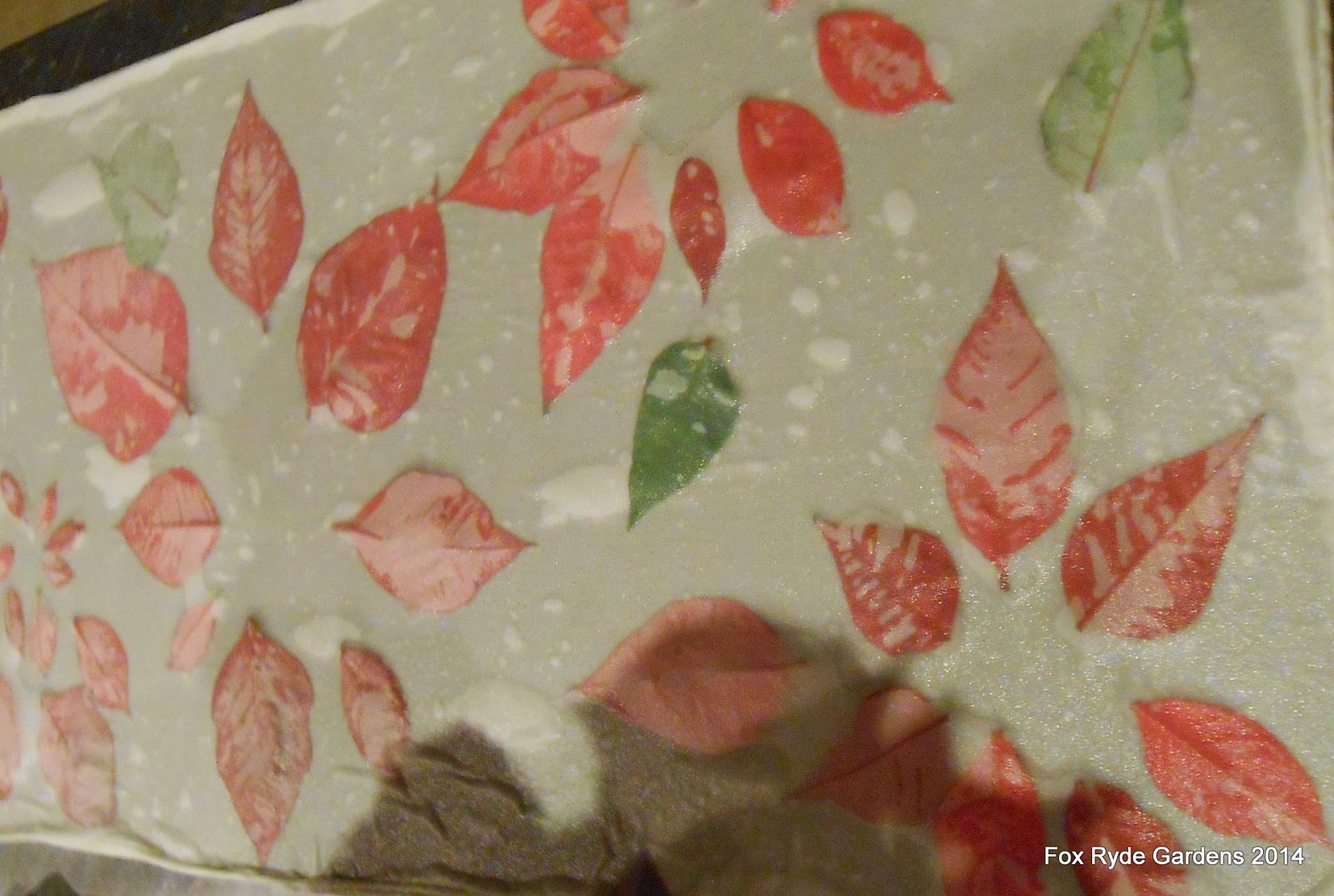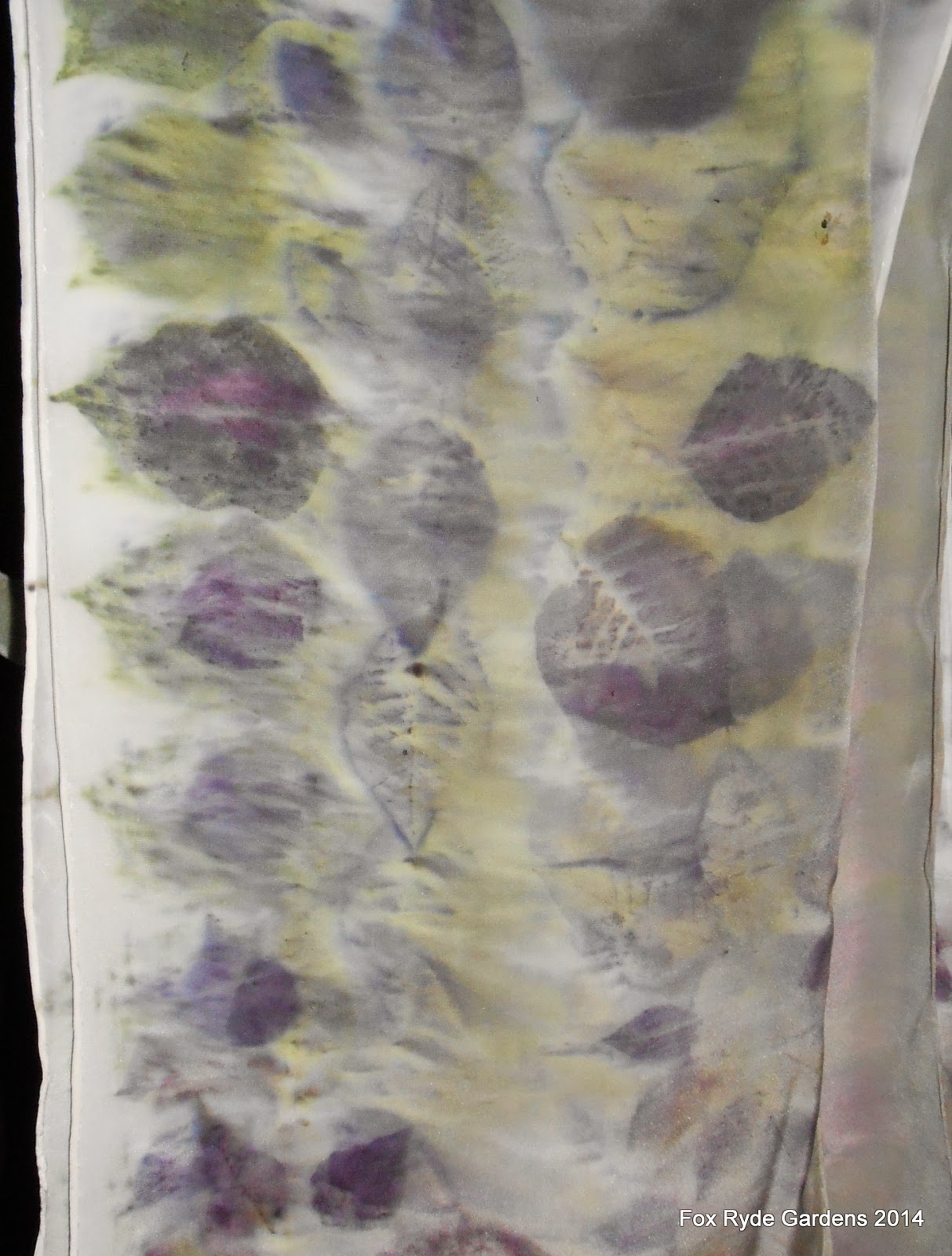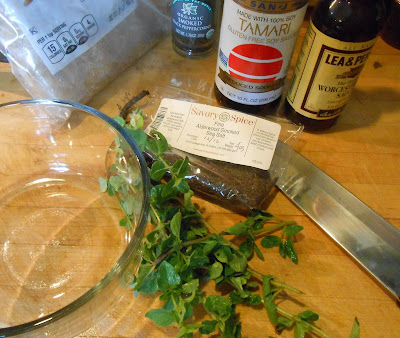Leaf Essence Scarves done with poinsettias!
 |
| Vibrant! Exciting! Beautiful! |
My friend Kathy, http://awanderingbotanist.com/, gets all sorts of great ideas.
She is constantly researching and had read a single throw-away line on a book. It went something like "The Aztecs used poinsettias for red dye."
Thus the madness begins.
We hatched all sorts of plots to obtain cheap/free after the Holiday Season poinsettia plants, which finally ended up with her getting a ton of discounted plants from Lowes in late December. Fiendishly decapitating and stuffing the stems into plastic bags, she came over and the fun ensued.
(In a wild obsessive run, I spent most of last half-year perfecting the technique I have dubbed "Leaf Essence"tm where the essence of the leaf or flower is actually coaxed onto silk using gentle heat and pressure. I get some crazy good almost photographic effects. I made a bunch of them and they sold well for the Holidays. I hope to make more next year, once the leaves emerge again.)
We decided to try both a pot of color, using the bracts (the red of the poinsettia is actually a specialized leaf called a bract - look it up, really!) and then I would try the Leaf Essence tm technique.
(I plan to write a book soon exploring this technique but I can't wait to share these with you! So here is my notice that these pictures and techniques are copyrighted and are mine.)
We pulled the bracts from the stems and promptly got covered in the white gooey sap. It washes off, but if you let it dry on your hands it can be a bit irritating. It's kind of rubbery when it does, it reminds me a bit of rubber cement, if you are old enough to remember that!
We started the pot up with a bag of bracts, and then I started to make scarves.
 |
| The bracts removed from the stems. You can see the white sap. |
The bracts are laid out on half of the scarf in a pleasing design and then folded over.
I'll have more details in my book so be patient with me.
I also tried using some of the green leaves. It really looks festive, doesn't it!
The scarves are steamed for a good long while.
When you open them up after the steaming, I was amazed by how the bracts completely transferred their essence into the silk.
The bright red bracts had become in some cases entirely transparent.
They are beautiful themselves, so delicate and ethereal. I want to maybe make paper with them, but for now, I am just enjoying them in a bowl.
So lovely. Each scarf is a work of art and entirely different.
At the end of the pictures, you will see this scarf washed and ironed.
I love how you can see the veins.
This is on the fold where you can see how interesting the imprint is. It's the same bract, but the print is creates is different. I think this is stunning.
Totally still gobsmacked by how beautiful.
The thing that really amazes me is the range of colors created.
I have some more experiments to do, but the color is very pH sensitive as well as heat sensitive. After washing and ironing, this scarf shifted to purple. In several trials, the color once shifted seems to be stable, but I need to mess about more. Always. Nature is amazing and tricksy.
The color on this one is amazing.
This is the scarf you see right after dyeing above.
Earlier in the fall, a friend of mine wanted to dye some yardage using commercial dyes. I've never used them so I was willing to share my studio and equipment, but was very clear that I would not be a source of knowledge.
It was really an odd and weirdly envious experience watching her tear open a bag of color and dumping it into a pot.
I love natural dyes passionately. I love how they are made from the plants that are the center of everything for me. I love the weird smells they make such that my poor long suffering husband knows what is in the pot by the way the studio smells when he walks in.
But they are really hard work. And they take a lot of time: the plants have to be grown or found in the wild, gathered, and then either processed by drying or freezing. When you are ready to dye, the fabric/yarn needs to be very thoroughly cleaned, then conditioned with a metal ion so the color stays, called a mordant.
The dye stuffs are simmered to release color and then the two are made one. Fabric and color. Glorious color. Never quite what you expected, rarely even, but natural and yours alone.
The downside is they rarely make the saturated even colors our eyes have come to expect from synthetic chemical dyes.
It was sort of dis-heartening to see what color could be had just tearing open a packet. I have a natural dyeing friend who calls all the brightly synthetically colored yarn "clown barf."
I had to think through my process again and was able to come out the other end with my love of natural colors stronger than ever.
As ever, I hope by seeing what I create using plants, you will come to share my love of the dye natural. Of gentle complex colors created without chemicals springing from the land we love.
I've posted a few in Etsy if you'd like to see more. They are truly one-of-a-kind.
https://www.etsy.com/shop/FoxRydeGardens?section_id=13489394&ref=shopsection_leftnav_9

















Comments
Thank you for your comments!
And synthetic dyes can be thinned for subtlety; you don't have to have "clown barf".
I just have no desire to use the synthetic dyes. I love love love the natural colors plants make. I love love love growing them.
I just get tired sometimes.
Thanks for your comment!
Last year the sweet gum pods everyone hates––that clog driveways but gives you a beautiful shade of gold––dropped around November. THIS YEAR they stayed in the trees (NYC is now zone 6B) until December! I'm still picking them up. And the color is now a golden brown.
It is overwhelming to see the effect of the climate crisis right in your yard.
We didn't even have cold until December, and then it was crazy epic cold. We had a 70 degree drop in 24 hours. Very hard on the trees.
Good on you for doing a dyer's diary!